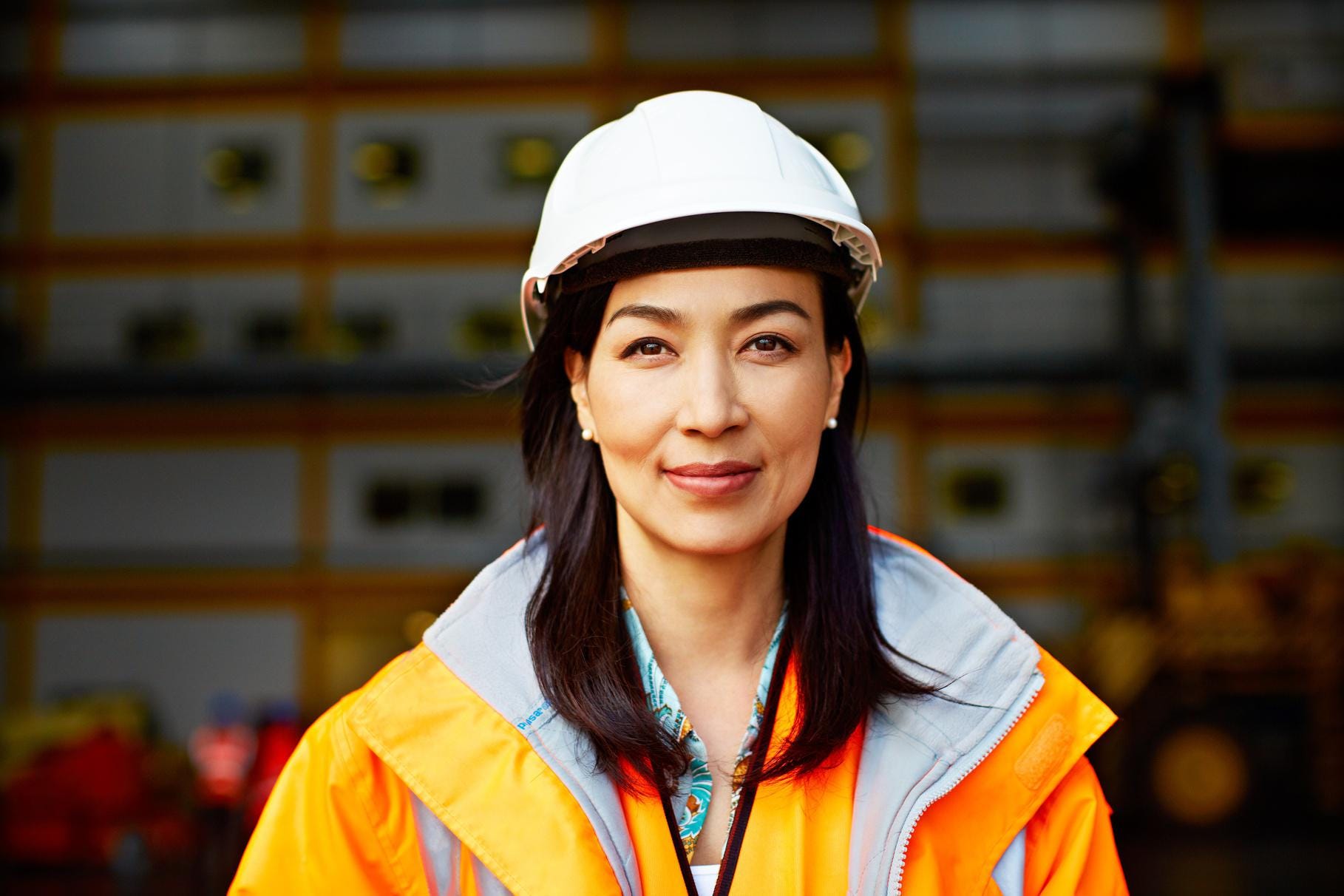
In every industry, things are changing faster and faster, and companies everywhere are reacting. As the great digital reshaping shows no signs of slowing down, Google Cloud industry leaders share their predictions for what’s ahead in 2022.
Challenges with visibility into supply chains and logistics are likely to continue in 2022. Winning companies are taking steps to address this by looking beyond traditional data sources for greater visibility and control.
getty
It’s an extraordinary time in our economy, with seismic change in multiple industries, from logistics and supply chains to online gaming, or retail, healthcare, even in the delivery of government services.
A key factor in this, of course, is the COVID pandemic, which supercharged digital innovations. Less noticed—and even more important in the long term—is a revolution in digital information itself: It’s obtained, gathered, and used in new ways thanks to cloud computing, and we will feel these positive effects for years to come.
Take the Retail industry, where many businesses had built strong online presences before COVID, and went into digital overdrive with the pandemic. Now retailers have more choices about online shopping, adding elements of personalization, notification, and curbside delivery that were thought to be years away.
They are also using physical stores as storage and shipment facilities, though, and creating blended experiences of physical and digital, using augmented reality to see what a couch might look like in their home, or examining goods in a store and then buying them online. Techniques in data analysis and personalization, developed online, can be used in physical settings, too. (You can read 2022 predictions from our Google Cloud industry leaders at the bottom of this story.)
Discover new ways to harness your data for real-time insights and actions.
Google Cloud
It’s become popular to discuss a far-off Metaverse, where we lead exclusively digital lives in an entirely virtual space, but the current reality of a more continuous digital and physical experience is here now.
Businesses more accustomed to working in the physical world, like logistics and healthcare, have scrambled to build their own digital presences for things like shipment monitoring or telehealth. In September we announced our Supply Chain Digital Twin, to help supply chain and logistics companies better understand their systems, and are continuing to build out our telehealth solutions, which enabled millions of people worldwide to get care during COVID. These initiatives are creating new ways of working and seeking treatments in healthcare that will evolve in coming years.
Related: 5 Ways telehealth is democratizing access to healthcare
Given the size of investments all industries continue to make, there is little sign of a slowdown in this digital reshaping. Instead, customers are seizing on the way Google Cloud offers them a kind of “data engine,” where legacy and new data on everything from product creation to customer tastes and delivery methods can be stored and analyzed in powerful new ways, using secure advanced analytics and artificial intelligence.
As a result, businesses of all kinds are gaining what my colleague Dominik Wee, who earlier wrote about the rise of digitally-attuned “empathetic machines,” says is a new digital systems-level view of the physical world. Every interaction, from a single manufacturing process, to the behavior of several factories inside one company, to how those factories can better interact with their customers and partners, can be captured and modeled.
Systems views are powerful because they use existing corporate data in a number of different contexts, depending on the need. Inventory data, for example, matters for the layout of an online store, or for logistics, or changing customer tastes, among many other things. Systems views also draw from public data sets, enabling a data engine that recognizes even more contexts and finds even more efficiencies.
Related: Cross-industry and industry-specific resources that can be used to navigate the COVID pandemic.
This will be a critical trend in 2022: It’s not just about the data, it’s about how the data is connected. Not simply secure medical records, say, but secure medical records and information about personal health monitoring, or weather, or patient access to telehealth. Not simply new hit shows in the Media business, but new monetization strategies, personalization, even AI-based suggestions on how to better configure the Content Delivery Network. Not simply the movement of goods in a supply chain, but factors like the number of workers available in a port, or the effect on transit times of, say, new regulations or packaging good for online orders.
Things are changing fast, and companies everywhere are reacting. As we begin 2022, we’ll see some companies further along in building strong data engines, with highly connected, system-level views. Others are just recognizing the abundant value in the data they own, and how they can improve their performance by managing it and connecting it in new ways. To all, the only hazard is in failing to recognize that things are changing. I can’t wait to see what customers do with the new tools and services we are building for this extraordinary time.
See you in the cloud.
Google Cloud
Google Cloud Industry Predictions for 2022
Table of Contents
In 2022, it’s expected that universities will take a more holistic look at data and begin to remove silos to allow information to be accessed and analyzed by cross-functional teams.
getty
From gaming to supply chain to financial services, here’s a roundup of 2022 predictions from our Google Cloud industry leaders.
Consumer Goods
“In 2022 we expect to see more companies taking control of their entire enterprise data estate and investing in digital twin initiatives, essentially expanding the 1 use of first-party consumer data to create a view across the value chain, which is crucial for greater agility and predictability.” — Giusy Buonfantino, Vice President, Consumer Packaged Goods Solutions
Financial Services
“These embedded experiences will soon permeate all aspects of our lives that involve money—and they’ll feel so frictionless that users won’t need to be aware of the underlying technologies and applied programming interfaces that support these transactions.” — Zac Maufe, Managing Director, Global Retail Banking Solutions
Games
“AI and machine learning increasingly power everything from network performance to global player matching. The delicate but essential work of encouraging newcomers and discouraging bad actors, optimizing monetization, or building and scaling up new player environments is being enhanced with AI and ML.” — Jack Buser, Director of Game Industry Solutions
Higher Education
“To meet the demands of an increasingly diverse student body, universities will need to maximize their technology investments. The newfound flexibility and ease of access will open education to more individuals, especially those who may not otherwise have considered pursuing a college degree.” — Steven Butschi, Director of Education
Manufacturing
“Initiatives that provide better data gathering and sharing—plus dashboards, analytics and seamless connections to artificial intelligence services—are already helping better connect systems and build greater supply chain understanding. This will ultimately help manufacturers better adapt to disruptions.” — Dominik Wee, Managing Director, Manufacturing and Industrial
Retail
“Consumers now expect a holistic view of what is in-store and online. They want to know what is in stock in-store, and accurate search allows retailers to understand their own product catalogue and inventory. Search provides a unified view and helps retailers bridge an omnichannel experience.” — Jose Luis-Gomes, Managing Director, Retail and Consumer
Sustainability
“Every industry is looking to make the largest impact based on their greatest strengths and capabilities. A race to just plant more trees, while positive, doesn’t leverage the best that companies have to offer, and often doesn’t address their specific environmental impact.” — Chris Talbott, Product and Solutions Marketing Lead
Supply Chain
“Visibility into supply chains and logistics was probably the greatest challenge during the holiday season, and that is likely to continue in 2022. Winning companies are taking steps to address this, by looking beyond traditional data sources for greater visibility and control.” — Hans Thalbauer, Managing Director, Supply Chain & Logistics Solutions
Technology
“Beyond wanting to be heard at the workplace, people are curious to know how their work makes a positive contribution. For example, companies want more visibility into the carbon footprint of their technology platforms and options to reduce it, offering positive contributions that are appreciated by both staff and customers.” — Will Grannis, Director, Office of the CTO
Telecommunications
“In 2022, we will witness a remarkable transformation of our two most important modern technologies, computing and communications. The distinction between the two is collapsing, along with divisions such as edge devices and core management, creating a cloud-based communications service world that is more powerful, more flexible and more environmentally sustainable.” — Amol Phadke, Managing Director, Telecom Industry Solutions







